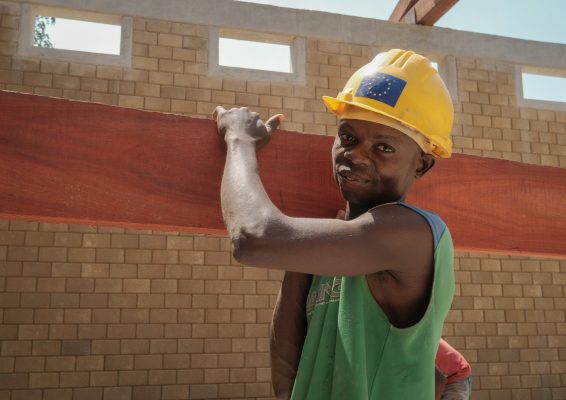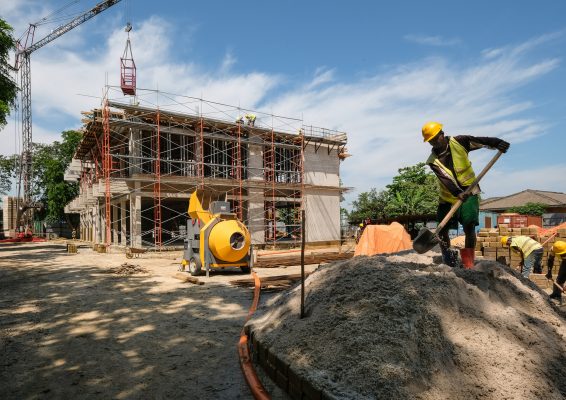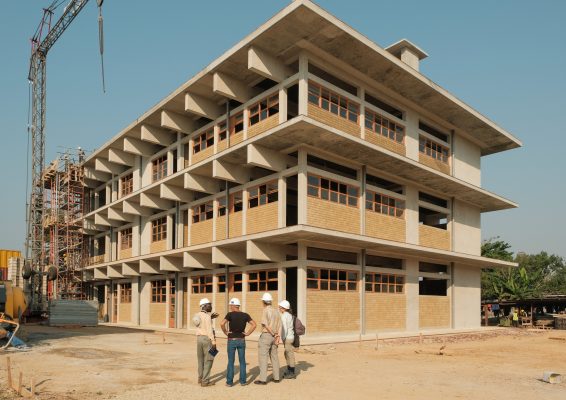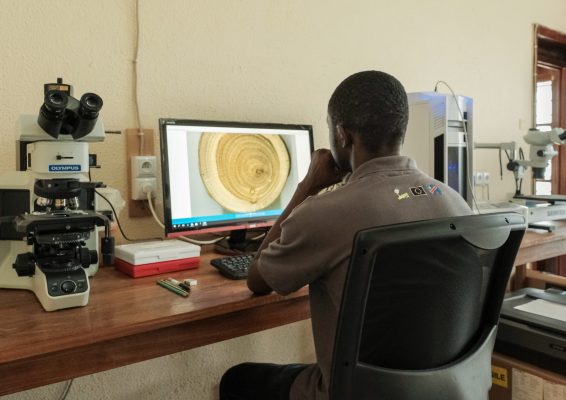All over Central Africa, it is a common sight to see worn-down buildings that appear to have been through decades of use, but in reality are only a few years old. Lack of qualified manpower in modern construction, tropical weather with extreme humidity, prevalence of low-quality construction materials and tight budgets for maintenance are frequent and difficult challenges for infrastructure’s durability and sustainability in the region.
However, a new building under construction in the northern reaches of the Democratic Republic of Congo (DRC) is overcoming these difficulties and leading the way in socially and environmentally sustainable architecture. As part of the FORETS project, led by the Center for International Forestry Research (CIFOR) and funded by the European Union, the company R&SD has partnered with the University of Kisangani (UNIKIS) to coordinate the construction of a 2,500-square-meter building on the site of the Faculty of Sciences, which will have many uses, including housing auditoriums and classrooms for hundreds of students from across the country.
The building, which is expected to be operational by January 2019, is special in many ways. First, it is designed to have a long life despite the harsh climate. “The design of the building’s roof, which is equipped with an efficient system to evacuate water, sunshades and a ventilation system, offers excellent resistance to bad weather such as heavy rain, aggressive sunstroke or very high humidity levels,” explains Quentin Ducenne, R&SD’s Managing Director and project manager.
“Our team believes that longevity in construction is a precondition for sustainability, and therefore we have ensured that we do not only source top-quality timber and other materials, but also that we use the best [building] techniques,” he adds.





